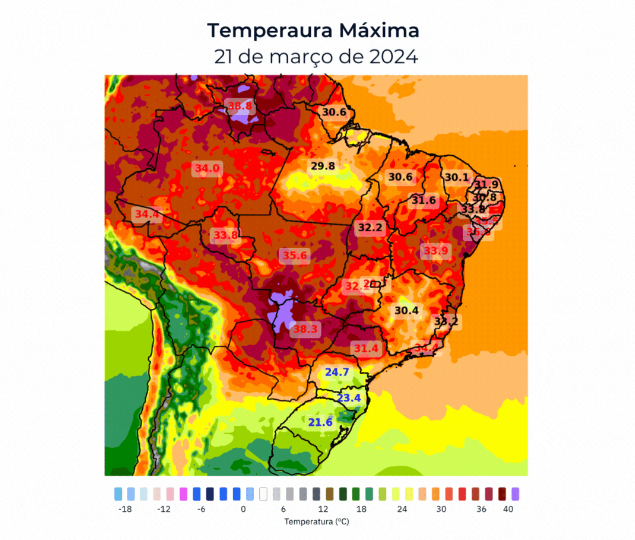Heat wave affects solar power generation in Brazil – pv magazine International
A heat wave drove Brazil’s power demand up to a record high of 102 GW last week. However, it also affected solar power generation and pushed PV module operating temperatures to up to 60 C.
March 25, 2024
From pv magazine Brazil
A heat wave that passed through Brazil earlier this month pushed energy consumption in the country to record levels. It also raised questions about the impacts of high temperatures on a system with a growing share of solar energy.
At some points, considering the heating effect of photovoltaic systems, the loss of efficiency may have reached 15% in this last heat wave, estimates the strategic leader of marketing and communication solutions at Brazilian meteo data provider Tempo OK, Caetano Mancini.
“The ideal temperature on solar panels is around 25 C,” Mancini told pv magazine. “At least, this is the industry standard for testing and evaluation. On average, PV systems suffer a reduction in efficiency of the order of 0.4% for each [degree Celsius] when the panel temperature exceeds 25 C.”
Mancini said that in the regions of São Paulo and Minas Gerais, air temperatures could eventually increase by 5 C above the average, which would be between 35 C and 40 C. This means panel temperature can reach up to 60 C.
“This would give a drop in efficiency of around 10%, 15%, more or less,” he explained.
Despite the loss of efficiency due to high temperatures, the participation of solar generation in meeting load demand continues to grow, as PV generation coincides with peak demand times associated with high heat.
“The photovoltaic solar source has been increasingly fundamental in supporting the National Interconnected System (SIN) in times of rising temperatures, a challenge that could become even more frequent with ongoing global warming,” said Rodrigo Sauaia, the president of ABSolar, the Brazilian PV association. “In addition to protecting the consumer’s finances, solar energy avoids greenhouse gas emissions in the country’s electricity generation, as it is a source that does not emit any gas, liquid or solid, during its operation.”
In November 2023, solar covered 10% of Brazil’s average monthly demand, according to the network operator. In the northeast, participation in meeting the monthly load reached 19.4% in January 2024.
Popular content
At the same time, the growing participation of PV in the energy mix requires more energy storage capacity and quickly deployable assets to meet the demand that was met by the solar source during the day. This year, the load ramp could vary between 25 GW and 30 GW.
“We had an El Niño with some temperature records, in September, November, and January, with a huge impact. This contributed to us having some temperature records in a large part here in the southeast of Brazil, with some persistent heat wave events and in November we had episodes with 10 Cabove average,” said Mancini. “What happens, in a very practical way, is the increase in evaporation in the largest region of the globe, which begins to affect the way winds move across the entire planet. This generates a natural impact on what we call the general circulation of the atmosphere and on rainfall patterns.”
This content is protected by copyright and may not be reused. If you want to cooperate with us and would like to reuse some of our content, please contact: ed*****@pv*********.com.


